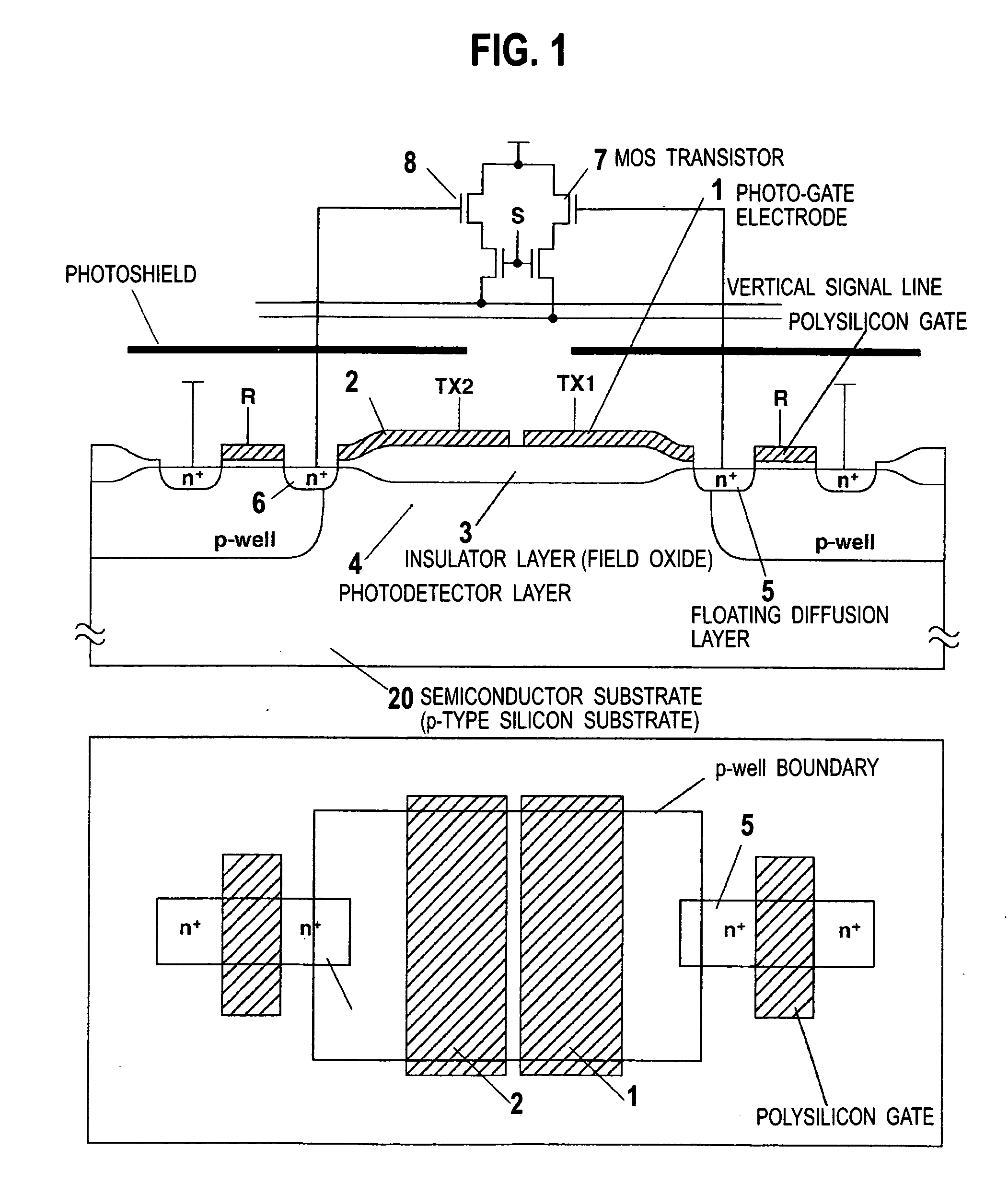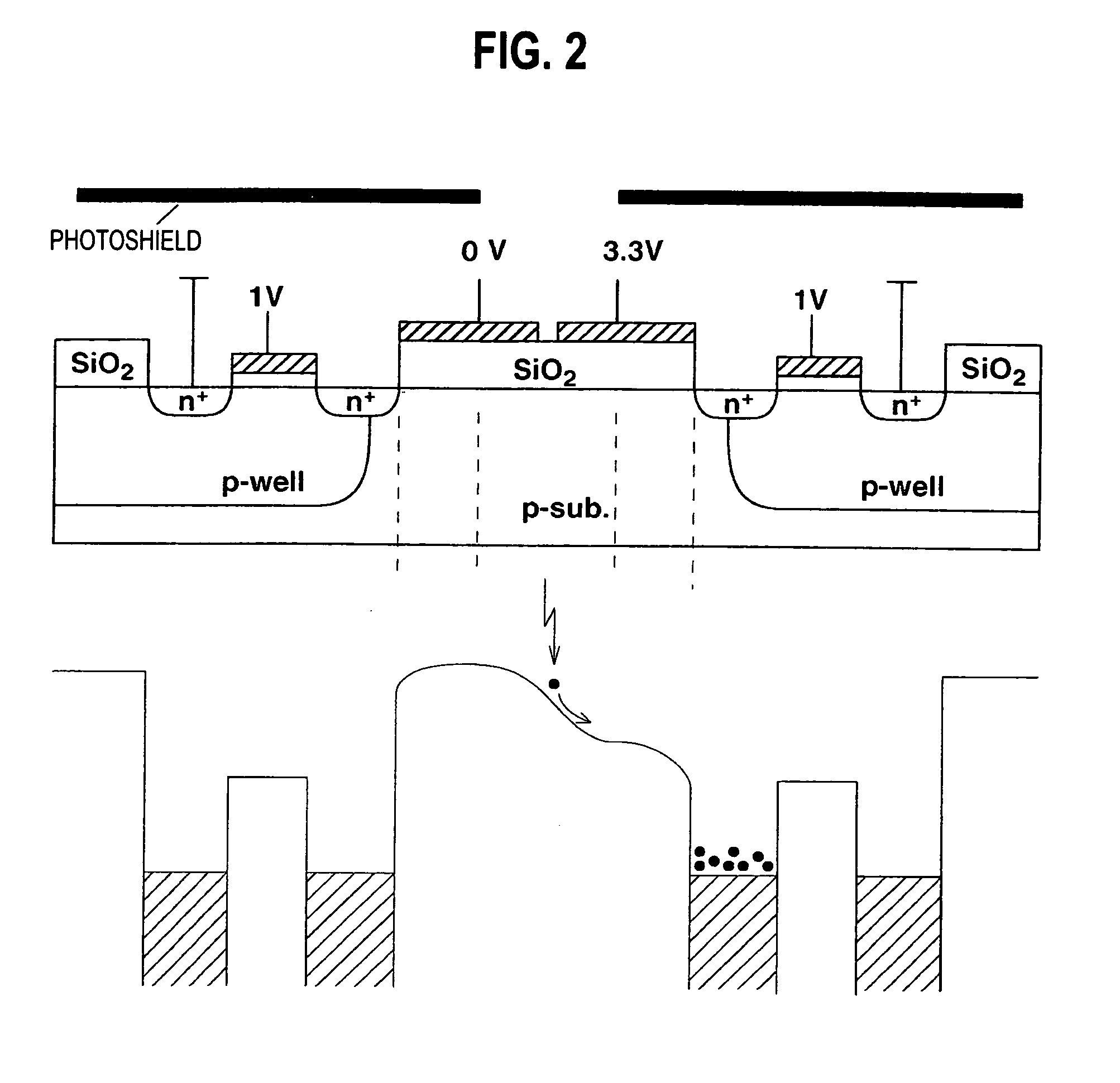Time-of-light flight type distance sensor
a technology of time-of-light flight and distance sensor, which is applied in the direction of distance measurement, radiation controlled devices, instruments, etc., can solve the problems of (1) not working well, increased cost of ccd-cmos manufacturing procedure, limited application fields of (1) methods, etc., and achieves high performance range-finding, low cost, and maximum performance
- Summary
- Abstract
- Description
- Claims
- Application Information
AI Technical Summary
Benefits of technology
Problems solved by technology
Method used
Image
Examples
first embodiment
[0028] Complete transfer of charges is required to provide a time-of-flight (hereafter, called ‘TOF’) sensor. However, it has been considered impossible to achieve such complete transfer using a standard CMOS architecture. Accordingly, some fabrication processes have been added to the standard CMOS manufacturing procedure. The present invention is to overcome such a problem by using a micro-fabrication technology and a special structure that can be fabricated using standard CMOS manufacturing procedure.
[0029]FIG. 1 shows a structure of a pixel of a range-finding sensor according to the present invention. While a single pixel may be used by itself for a certain application field, arranging a plurality of pixels one-dimensionally or two-dimensionally implements a range-finding sensor. FIG. 1(a) shows a cross-sectional view of the pixel of the range-finding sensor while FIG. 1(b) shows a plan view observed from above a surface of a semiconductor substrate—observed from a location in t...
second embodiment
[0044] The structure of FIG. 2 is easily influenced by a background light (if it exists). That is, according to FIG. 2, even when reading out a signal, charges due to the background light are included in the signal, and furthermore, the times required for reading out the charges due to the background light differ in respective horizontal lines. This makes it difficult to perform background light removal processing. To avoid the difficulty in the background light removal processing, the read-out period needs to be sufficiently short relative to the TOF operating time, and thus high-speed read-out is required.
[0045]FIG. 5 shows a structure of a pixel circuit that is not influenced by the background light when reading out a signal. FIG. 6 is a timing chart for canceling the influence of the background light by reading out only signals due to the background light.
[0046] MOS transistors (9 and 10) are prepared on the right and the left side, respectively, so as to separate two floating...
third embodiment
[0052] In a structure shown in FIG. 1, if a fabrication process of forming another n-type diffusion layers under the field oxide is available, a structure of connecting the photodetector layer to the floating diffusion layers, which serve as the sources (or drains) of the MOS transistors via the n-type diffusion layers is possible, as shown in FIG. 7. When a wide (along the depth direction to the plane of the paper) gate width of a photodetector layer is designed so as to ensure a sufficiently large optical detection area, the greater the area of the high-concentration source or drain region of the MOS transistor, the more the dark current increases and the more the capacitance also increases, decreasing the voltage sensitivity. Therefore, as shown in FIG. 7, the n-type diffusion layers are provided so that the n-type diffusion layers can capture electrons generated in the photodetector layer.
[0053] Note that an n-type well layer may be used as the n-type diffusion layer being form...
PUM
 Login to View More
Login to View More Abstract
Description
Claims
Application Information
 Login to View More
Login to View More - R&D
- Intellectual Property
- Life Sciences
- Materials
- Tech Scout
- Unparalleled Data Quality
- Higher Quality Content
- 60% Fewer Hallucinations
Browse by: Latest US Patents, China's latest patents, Technical Efficacy Thesaurus, Application Domain, Technology Topic, Popular Technical Reports.
© 2025 PatSnap. All rights reserved.Legal|Privacy policy|Modern Slavery Act Transparency Statement|Sitemap|About US| Contact US: help@patsnap.com



